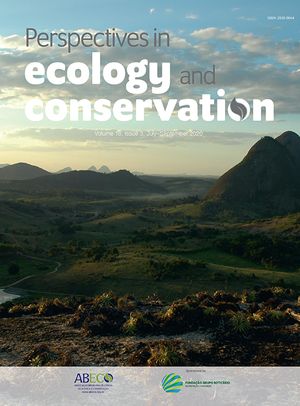- •
Local communities cooperate and participate in CBTH programs due to power-imbalance between strong governments and weak communities who neighbor or live closely with wildlife.
- •
Contingency propositions that help practitioners and governments to understand and implement projects that seek environmental conservation in collaboration with local communities.
- •
Key components of community-based trophy hunting programs identified and defined.
- •
Factors affecting CBTH program’s process that determine the outcomes of CBTH programs.
- •
Identifying specific and quantitative objectives and linking them to timeframes and budgets.
- •
Developing strategic monitoring and evaluation programs focussed on MPA performance.
- •
Enabling local stakeholders to participate in planning processes.
- •
Explicitly considering MPA costs and leveraging existing sources of funding.
- •
Decentralizing resource management and empowering local stakeholders to manage resources sustainably.

- •
The replacement of natural vegetation to agriculture, pastures or urban matrices decreased genetic diversity in the Palla’s long-tongued bat.
- •
Pallas’s long-tongued bat had a quasi-stable range distribution since the last Glacial Maximum.
- •
The Quaternary climate changes had no significant effects on the genetic diversity of the Palla’s long-tongued bat.
- •
Populations of the Palla’s long-tongued bat was differentiated by isolation-by-distance, but not by environment.
- •
Our findings point to the maintenance of large areas of natural vegetation to conserve genetic diversity in the Palla’s long-tongued bat.

- •
Large herbivores cause genetic diversity loss between cohorts in a desert shrub.
- •
Parental and offspring cohorts showed increasing inbreeding.
- •
Livestock reduced seed set, seedling emergence and increased offspring mortality.
- •
Unmanaged large exotic herbivores seriously affect dryland vegetation structure.
- •
Disturbance jeopardize plant evolutionary potential thought complex effects.

- •
The zooplankton was the most studied taxon, followed by mollusks and crabs, and it was also dominant across the hydrographic regions.
- •
Cases about microplastics were reported only in three regions.
- •
The hydrographic region of Paraná comprised the largest number of cases for the three invertebrate groups.
- •
It was detected a disproportionately low increase of number of cases in relation to population density in the hydrographic regions.

- •
Measuring objectively the ecological integrity of an ecosystem is a complex task.
- •
Deviation of an indicator variable from a reference relationship is a measure of integrity.
- •
Plant biomass (indicator) is constrained by vegetation height (context variable).
- •
Fragmentation (indicator) is constrained by the amount of habitats (context variable).
- •
In the anthropocene, conservation goals must be set without pristine reference states.

- •
Salix × rubens (hybrid crack willow) is invading Brazilian riparian ecosystems
- •
Most individuals occurred exclusively along watercourses and floodplains
- •
Water transport can facilitate hybrid crack willow dissemination
- •
Cultivation and transport must include measures to prevent biological invasions
- •
Such measures have still not been established by the government

- •
Brazilian government liberates the sugarcane plantations in the Pantanal and the Amazon.
- •
This non-sanctioned crop is likely to become the newest driver of deforestation in these biomes.
- •
Direct and indirect conversion of forests can create a carbon balance debt that could take centuries to offset.




